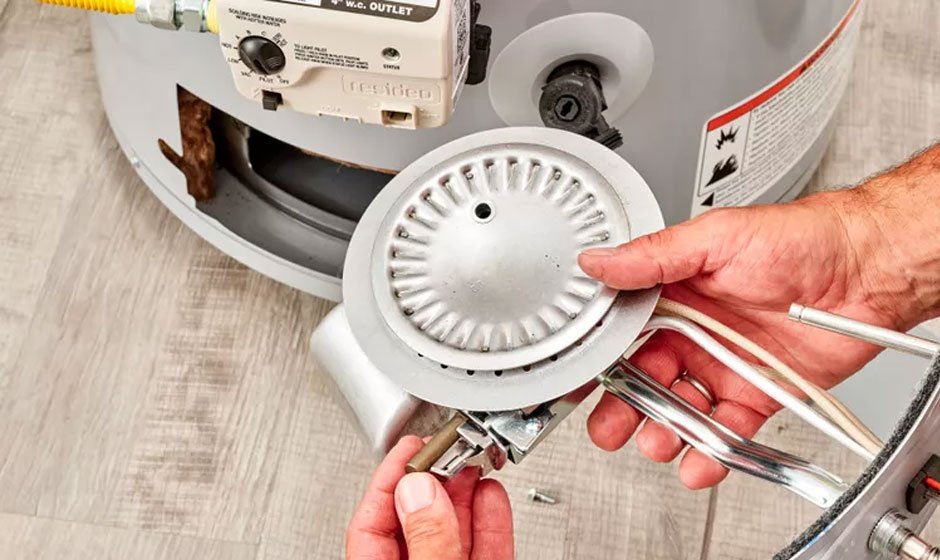Introduction
The thermopile in a gas water heater is a crucial component responsible for generating electrical voltage to control the gas flow. If you’re experiencing issues with your water heater, such as a pilot light not igniting or the burner not staying lit, it’s possible that the thermopile voltage is low. In this guide, we’ll walk you through the steps to troubleshoot and fix this problem.
Troubleshooting Low Thermopile Voltage
Before proceeding with any repairs, it’s important to ensure your safety. If you’re not experienced in working with gas appliances, it’s best to seek professional assistance. Gas-related repairs should be handled by trained professionals to prevent accidents or further damage.
Here’s a step-by-step guide to troubleshoot low thermopile voltage in your water heater:
Step 1: Turn Off the Gas For safety reasons, the first step is to turn off the gas supply to the water heater. Locate the gas control valve on the unit and turn it to the “OFF” position. Additionally, close the shutoff valve on the gas supply line to the water heater.
Step 2: Inspect the Thermopile Locate the thermopile, which is typically connected to the gas control valve. Check for any visible damage, such as loose or disconnected wires, corrosion, or worn-out components. If you notice any issues, it’s recommended to replace the thermopile.
Step 3: Clean the Thermopile Use a soft cloth or a mild abrasive pad to gently clean the surface of the thermopile. Dust, debris, or soot accumulation can affect its performance. Ensure the thermopile is free from any dirt or residue that could hinder the electrical current generation.
Step 4: Check the Connections Inspect the connections between the thermopile and the gas control valve. Ensure they are secure and free from corrosion or rust. Tighten any loose connections and clean the contacts if necessary.
Step 5: Test the Thermopile Voltage Using a multimeter set to the millivolt range, carefully measure the voltage output of the thermopile. Follow the manufacturer’s instructions for proper testing procedures. If the measured voltage is below the recommended range (typically between 25-35 millivolts), it indicates a low thermopile voltage.
Fixing Low Thermopile Voltage
Once you’ve identified the low thermopile voltage issue, follow these steps to fix the problem:
Step 1: Replace the Thermopile If cleaning and tightening the connections didn’t improve the voltage, it’s advisable to replace the thermopile. Purchase a compatible replacement thermopile from a hardware or plumbing supply store. Install the new thermopile according to the manufacturer’s instructions, ensuring proper alignment and connection.
Step 2: Reassemble the Water Heater After installing the new thermopile, reassemble the water heater components in the reverse order of disassembly. Make sure all connections are secure and properly tightened.
Step 3: Restore Gas Supply Open the shutoff valve on the gas supply line and turn the gas control valve back to the “ON” position. If you have a standing-pilot water heater, follow the manufacturer’s instructions to relight the pilot.
Step 4: Test the Water Heater Once the gas supply is restored, test the water heater by turning on a hot water faucet. Monitor the pilot light and burner to ensure they ignite and stay lit properly. Check for any signs of gas leaks using a soap-and-water solution on the connections. If you detect any leaks, tighten the connections and retest.
Conclusion
Troubleshooting and fixing low thermopile voltage in a water heater can be a challenging task. However, by following the steps outlined in this guide and taking necessary safety precautions, you can address the issue effectively. Remember, if you’re not comfortable or experienced in handling gas appliances, it’s best to seek professional assistance to ensure your safety and prevent further damage to the water heater.
Regular maintenance and periodic inspections of your water heater can help prevent thermopile voltage issues. Additionally, familiarize yourself with the manufacturer’s guidelines and recommendations for your specific model to ensure proper care and optimal performance.
By addressing low thermopile voltage promptly, you can ensure that your gas water heater functions efficiently, providing you with reliable hot water when you need it.









